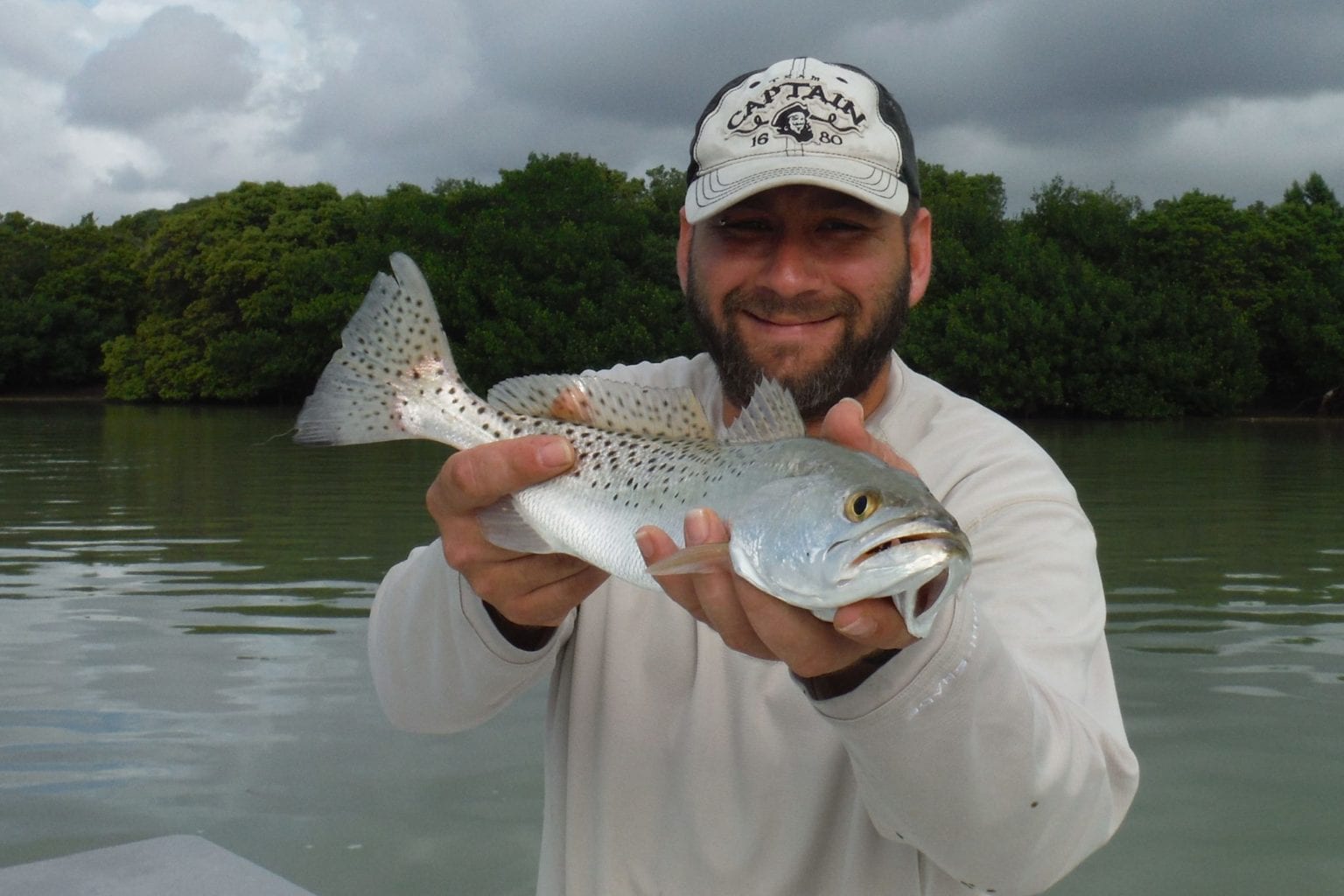
In the southeast coastal fisheries of the United States, one of the primary targets for inshore fisherman is the redfish. Redfish are available during the colder winter months and can be just as active as they are in the heat of the summer. The biggest change between summer and winter redfish fishing is bait choice and presentation. But, the point being – this is the species you see talked about most. However, the “other species” that inshore anglers can expect to catch with just as much ease in these winter months is the Sea Trout.
Sea Trout fishing in the winter is not a hugely difficult task, but some tactics should be addressed to make the most of your time on the water. If you have ever fished for these guys in the summer, you know that excited presentations can really turn these guys on. This includes literally smashing topwater lures, inhaling suspending twitch baits, and of course – emptying your live well if using live bait. But much like redfish, these tactics should change a bit during the cooler months of the year. For the purpose of this article, we will stick with artificial baits.
Soft Plastics
For the most part, you could follow one rule when it comes to soft plastics – slow your presentation. Whether it be a shrimp or a paddle tail – a slow retrieve with slow action is going to be key. Even for the guys who like to run the popping cork with a DOA shrimp setup, this tactic definitely still works – but giving the twitch back a good pause is going to be necessary. In any case, a sea trout will strike when the bait is either rising or falling – so always be prepared. With paddle tails, you can use a similar action as a slow rise and fall, but you can also simply slow retrieve it, or use the same tactic as the suspending twitch bait described below. This can be with or without a belly weighted hook – I generally always use a belly weighted hook though.
Suspending Twitch Baits
I always bring up suspending twitch baits over swim baits (with the exception of a paddle-tail) because they offer you the most control over the presentation, can be used in much shallower waters, and you can keep them from sticking on the bottom on the flats. That said, these are definitely still a favorite even when its cold outside. And again, the change is going to be – slow it down. Twitch > Long Pause > Twitch > Long Pause, etc.,. Again a strike can occur during any part of this action, so keep a good grip.
Top Water
You will hear a lot that the topwater bite is off in the winter months for nearly any species. I simply do not find this to be true. Admittedly, I wouldn’t fish it primarily like I am known to do in the summer, but there are definitely times when this works just fine. Times I have found it to work:
- Glass calm mornings at daybreak
- When the sun comes up high, and temps rise
- That random winter-time occurrence you run into here and there where sea trout are smashing bait pods- even in the cold
In all three of those circumstances, I will throw the topwater – regardless of temp. And, it works most of the time. Of course, you will get a fast feel if it isn’t going to work out and you switch back to a different bait. However, it is definitely worth the quick effort to find out. And, you wouldn’t guess what I am going to say next.. yup, work it slow! Same as the above, twitch and pause and be ready.
Where to Find Them
This part doesn’t change too much – over the grass, grass edges at a slight drop off during tide swings, and under floating grass/seaweed in slightly deeper water. You will find that tidal swings are going to be a major contributing factor as it relates to activity. You will also find that if you had a cool night, but the sun is coming up on a clear day – just like your cabin fevered kids – they will come out to play.
If you are going out to target them, I have seen that in January the big gators start to get pretty active again. This seems to be part of a rhythm that maintains itself all the way through spring. For the earlier parts of winter (November, December), I admittedly see mostly dinks – but I will see them all day. In either case, going after sea trout can make up for an otherwise slow winter fishing day.

